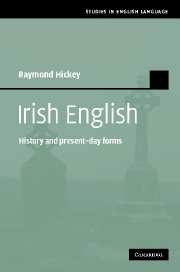2 - History I: The coming of the English
Published online by Cambridge University Press: 14 January 2010
Summary
External developments
The history of Ireland since the late Middle Ages is the unending story of its relationship with England. This is taken to have begun in the late twelfth century. But just as there had been contacts with the Germanic tribes of the continent before the actual invasion of England in 449, trade had been carried on between Ireland and England before the invasion of the country by a collective force of Anglo-Normans, English, Welsh and some Flemish in 1169.
According to the (forged) Donation of Constantine, the Pope ruled over all islands which of course included Ireland and England. For this reason Henry II (1154–89) sought papal permission to invade Ireland from Pope Adrian IV (Nicholas Breakspear, the only English pope, who held office from 1154 to 1159). It is probable that the latter issued a bull Laudabiliter in 1155 authorising Henry to carry out the task, which he then did fourteen years later on the grounds that the church had fallen into a state of disarray there.
The external circumstances of the invasion were roughly as follows. One Dermot MacMurrough, King of Leinster, was attacked in 1166 by one Tiernán O'Rourke (Martin 1967: 123f.) from Breifny (in the north-west midlands), whose wife had been abducted by MacMurrough; the king fled to Wales. In an effort to reassert his power in Leinster, MacMurrough returned a year later with a force consisting of Normans and Welsh from Pembrokeshire.
- Type
- Chapter
- Information
- Irish EnglishHistory and Present-Day Forms, pp. 30 - 84Publisher: Cambridge University PressPrint publication year: 2007



